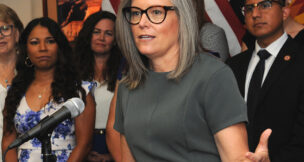Budget analysts say state likely to face $1.1B shortfall
Julia Shumway//April 9, 2020//[read_meter]
Arizona will likely face a $1.1 billion budget shortfall because of the coronavirus pandemic, and it will take months to learn just how grim the state’s economic forecast looks, legislative...
No tags for this post.

















